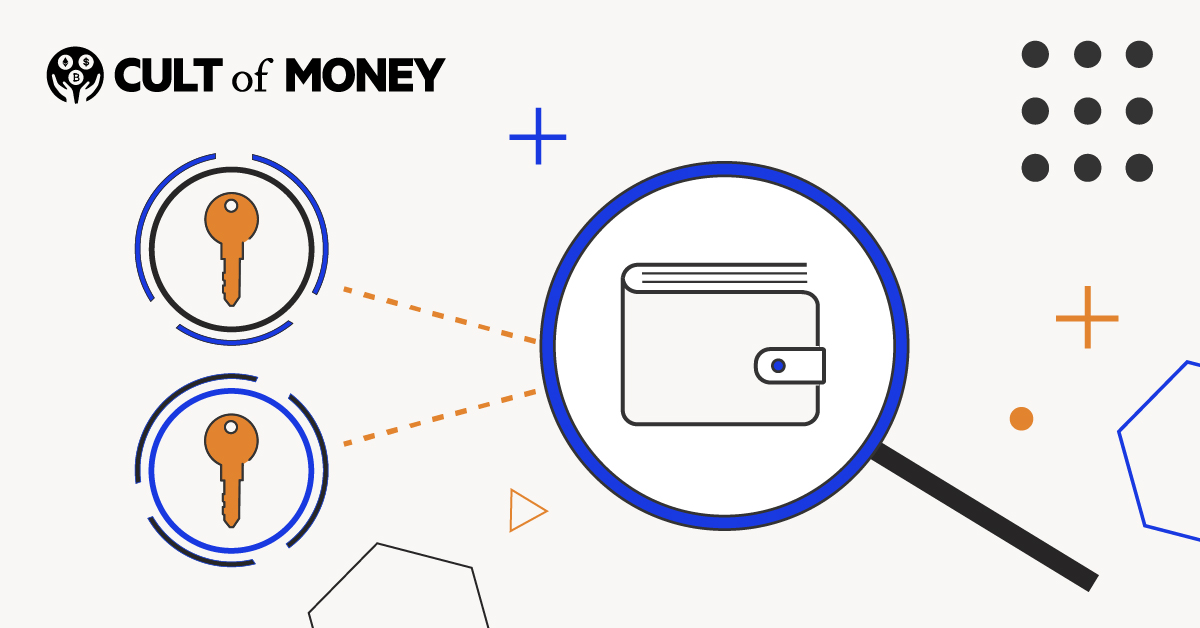
A standard cryptocurrency wallet relies on a public address and a private key to control funds. The public address is used to receive digital assets, and the private key lets you actually authorize transactions.
But Multisig wallets support two or more private keys, so wallet control is shared between multiple parties. This offers additional security and prevents one party from controlling funds in a wallet.
However, multisig wallets, short for multi-signature wallets, can be complicated. And they don’t always make sense for the typical cryptocurrency user.
Here’s a closer look at how multisig wallets work, how to set one up, and when using one makes sense.
What Is A Multisig Wallet?
A multisig wallet is a cryptocurrency wallet that requires two or more private keys to sign and authorize transactions.
If you’ve ever seen a movie where two generals have to put in different keys simultaneously to launch a missile, the idea is somewhat similar. But instead of physical keys and rockets, multisig wallets use virtual keys and unlock the contents of crypto wallets for outgoing transactions.
Multisig wallets exist because it's often risky for a single entity to have control over a wallet if that wallet address has enormous amounts of crypto. By splitting control over a wallet across multiple keys, multisig wallets help increase security and remove the risk of a single point of failure.
Mutisig wallets can work functionally in several ways as well. For example, a single private key may be split in two, requiring both halves of the key together to enter an outbound transaction.
Others use more elaborate techniques where two or more wallets are used to unlock a third wallet, which holds the currency.
When Should You Use A Multisig Wallet?
Multisig wallets are ideal for institutional cryptocurrency holders, like exchanges, brokerages, investment firms, and family offices. In short, any entity that holds an immense amount of digital assets can benefit from using a multisig wallet.
These are all situations where having two or more people controlling private keys makes sense. If you’ve seen a business check that requires multiple signatures over a certain amount, multiple signature wallets offer similar financial protections.
There are also several examples of times investors could have avoided a major security incident by using multisig wallets. Some of the most infamous cryptocurrency losses of all time resulting from a single point of failure include:
- QuadrigaCX: The founder of QuadrigaCX passed away as the apparent sole holder of the private keys for the main QuadrigaCX wallets. An investigation found that the founder, Gerald Cotten, used customer funds like his own personal crypto piggy bank. A second wallet signature holder may have prevented this theft and the loss of hundreds of millions of dollars.
- Cryptsy: Founder and CEO Paul E. Vernon was indicted for defrauding customers, alleging that customer funds were hacked when he stole them and moved to China. The U.S. government charged Vernon in this fraud case.
- Thodex: Faruk Fatih Ozer, the founder of the Turkish-based Thodex exchange, stole roughly $2 billion worth of Bitcoin and fled the country. This mega-fraud led to an Interpol search for the founder and painful losses for Thodex customers.
There’s a clear trend here: having customers' assets in the hands of a single person doesn’t tend to work out well.
While it’s challenging to prevent solo founders of small exchanges from pulling escape acts like this, working with reputable exchanges should prevent you from falling victim to this type of theft. This is because major exchanges like Coinbase and Gemini invest heavily into security and backups, including multisig wallets, to protect customer funds.
Personal investors generally wouldn’t need a multisig wallet unless they want to protect a considerable amount of currency.
Another situation where multisig could make sense is investing together with friends or family. You could create a setup where at least two of three keys are required to unlock the wallet, or whatever else makes the most sense for your investing and storage needs.
Popular Multisig Crypto Wallets
If you want to use a multisig wallet to increase security, you're in luck. There are several popular multisig wallets you can use, with popular options including:
- Armory: This open-source Bitcoin wallet has support for cold storage and multi-signatures. It lets you require up to 7 authorizers to approve transactions and runs using simple software on your computer.
- BitGo: BitGo is a mobile and web wallet that uses three keys to improve wallet security. There's a client key, BitGo key, and backup key so there isn't a single point of failure.
- BitPay: Formerly known as CoPay, this crypto app lets you buy, hold, and swap various cryptos from your smartphone. You can also create a multisig wallet for your BitPay account.
- Electrum: Another Bitcoin wallet that lets you create a multisig wallet that requires up to 15-of-15 authorizers to approve transactions.
- Genosis Safe: An Ethereum-based smart contract wallet for crypto and NFTs that lets you turn other popular wallets into multisig wallets.
- Ledger: This leading hardware wallet integrates with multisig wallets like Armory and Electrum.
Choosing the right multisig wallet largely depends on how many keys you want to create and require for authorization.
For example, Electrum is popular because its 15-of-15 capacity is useful for larger teams that want to share wallet control. In contrast, some people prefer using hardware wallets to software wallets and should therefore stick with Ledger.
How To Set Up A Multisig Wallet
Setting up a multisig wallet is getting easier and easier as mainstream wallet providers add multisig support. For example, wallets like Electrum offer native support for multiple signatures. And hardware wallets like Ledger continue to integrate with more multisig wallets.
As for setting up your multisig wallet, the process takes four simple steps:
- Choose A Multisig Wallet: First, choose your multisig wallet provider. The best solutions integrate with trusted hardware wallets like Ledger and Trezor.
- Create Public And Private Keys: Next, set up your public address and private keys based on your wallet setup instructions. Keep this information backed up somewhere safe if you’re able, in addition to the software or hardware wallets used to store the keys for regular use.
- Test Your Wallet: Don’t fund your wallet before testing it. To test your wallet, send a small amount of crypto to the public address and see if you can access it using your private keys.
- Add Funds: After testing your wallet, you can use it. The public address is used to receive currency from any other address. You don’t need your keys available to receive. If it’s time to withdraw, bring your keys together to unlock the wallet and enter your withdrawal transaction.
Multisig Wallet Pros & Cons
Understanding what a multisig wallet is and how they work is the first step in deciding if you need one if the first place. Additionally, there are several pros and cons you should consider before using a multisig wallet.
Pros:
Cons:
Should You Use A Multisig Wallet?
Most individual cryptocurrency users don’t need a multisig wallet. Instead, a quality hardware wallet or software wallet like Trust Wallet is enough to keep most users' digital assets extremely secure.
But for substantial wallets or business use, a multisig wallet is probably the best way to go.
The Bottom Line
It doesn't matter if you're brand new to crypto investing or are a serious trader: taking charge of your security is always important.
Generally, this means protecting the password you use to login to your exchange of choice. And if you use a hardware or software wallet, it's also important to protect your private keys and to have backups available.
However, multisig wallets add even more security and remove a single point of failure. If you have a large crypto portfolio or want to share wallet control with others, it's the right wallet solution to turn to.

Eric Rosenberg is a financial writer, speaker, and consultant based in Ventura, California. He holds an undergraduate finance degree from the University of Colorado and an MBA in finance from the University of Denver. After working as a bank manager and then nearly a decade in corporate finance and accounting, Eric left the corporate world for full-time online self-employment. His work has been featured in online publications including Business Insider, Nerdwallet, Investopedia, The Balance, HuffPo, Investor Junkie, and other fine financial blogs and publications. When away from the computer, he enjoys spending time with his wife and three children, traveling the world, and tinkering with technology. Connect with him and learn more at EricRosenberg.com.
